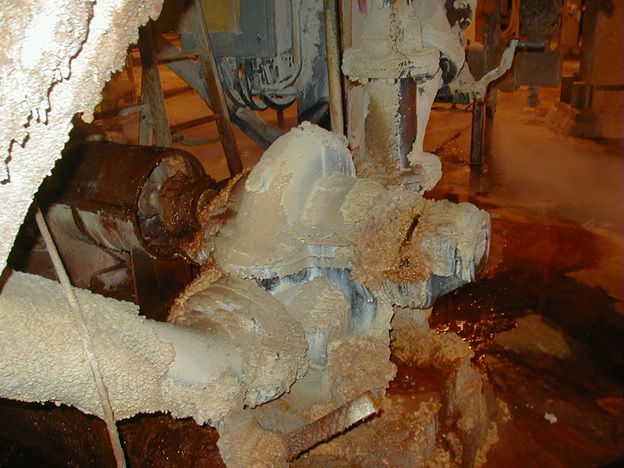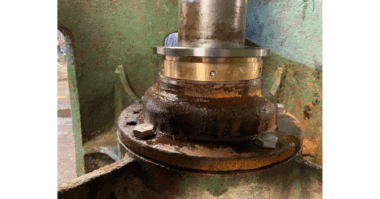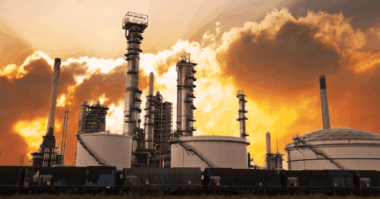Author: Henri Azibert
While pumps are primarily designed to transport liquids, quite often, some solids are present in the process flow. It might be incidental, such as when pumping river water is naturally mixed with some sand and silt. Other times, the primary purpose is to transport solids. In mining, for example, excavated material is mixed with water so it can be sent to a processing facility. The higher the concentration of solids, the more efficient the process is, but also the harsher it is on equipment. And it can be most damaging to seals, as they tend to be rather delicate. So what are the best strategies to effectively and reliably seal equipment transporting abrasive slurries? The first key to effectively seal slurries is paradoxically to not do it.
It does not seem possible to avoid subjecting the seal to abrasion, erosion, clogging, and destruction when its very purpose is to be the barrier between the slurry and the environment; and yet, that is the primary method used. How is it done? There are two basic methods: the first method is to introduce a clean fluid into the process to isolate the seal from the slurry; the second is to use two seals with a clean barrier fluid between the two seals at a pressure higher than the pressure in the seal cavity. What is sealed is a clean liquid, not a slurry. Note that both methods, with some minor variations, are used for both compression packing and mechanical seals.
The first method introduces a clean fluid, most often water, into the seal chamber or the lantern ring to isolate the seal or packing from the process. The flush pressure must be at a higher pressure than in the seal area, and the flow must be sufficient to effectively keep the process at bay. A restriction between the seal and the process in the form of a restriction or throat bushing is used to make sure that the clean fluid velocity is high enough to prevent process ingress, with 15 feet per second considered to be more than sufficient. It is simple and effective. There are, however, some drawbacks. The required velocity can make the flow rate quite high, and dilution of the process is not always allowable, or only to a certain point. Removal of diluent can be extremely energy intensive in cases where it must eventually be evaporated out of the process. And then, where does the pressurized clean liquid source come from? Inside a plant, the concerns will be reliability of the source at a high enough pressure; but in remote locations such as in mining operations, a flush source may not be available. Even if it is, the cost of cleaning it for sealing purposes might be exorbitant.
The next approach is dual seals. In this case, two seals are used, with a barrier fluid at a higher pressure than in the seal cavity, for effective sealing. It can be a continuous flow through the seals or into the lantern ring in the case of packing. The main advantage is that the product dilution is eliminated or minimized to the point where it is insignificant. The amount of flow can also be reduced tremendously as the only requirement is to be able to carry away the seal-generated heat. The seal materials used on the process side must be able to resist abrasion and erosion. Mechanical seal faces will typically be silicon carbide or tungsten carbide. Often, tungsten carbide is preferred as it is more shock-resistant than silicon carbide. For compression packing, a strong and tough fiber such as aramid is used next to the slurry. However, this method still requires a continuous supply of clean liquid.
Another system is to use a dual mechanical seal with a barrier fluid tank. There, only a minimal amount of external liquid is required. The tank is pressurized with air or nitrogen, and the only maintenance is monitoring tank level. This would seem to address all concerns, yet there are some aspects that prevent universal acceptance. A dual seal system with support components is significantly more capital intensive than a single seal or packing. To ensure proper operation, much knowledge and understanding of seals is required.
With all this in mind, a question often asked is why a single seal without environmental controls would not be the best solution. It can, but only under certain conditions. There are three characteristics of slurries that need to be considered in that they impact sealing in different ways. They are settling, non-settling, and dewatering slurries.
In settling slurries, particles settle fast and are not uniformly distributed. The particles are relatively large, typically greater than 75-100 µm. There is more clean water or liquid available for seal face lubrication. This is typical of mining or coal slurry, gravel, sand, and tailings.
In non-settling slurries, solids do not settle and remain in suspension with particles smaller than 75 µm. The smoother particles tend to form a stable, homogenous, viscous mixture with less wear effects on metal components. But the smaller particles can migrate across the seal faces, wearing them down, and clogging the atmospheric side of the seal. Think of clay, limestone, and hydrate.
Dewatering slurries comprise lighter and typically organic materials; they can be cellulous or fibrous. The free water can be centrifuged away from the seal, creating potential for severe clogging, high heat, and dry run conditions. Typical services are paper pulp, stock, and corn processing.
Counter-intuitively, smaller particles can be much more damaging to seals than larger ones. A single seal arrangement will work best in settling slurries, with heavy duty seals specifically designed with hard seal faces and metal parts. A wide-open seal chamber is required for long life. A “slurry seal” – if placed inside a packing stuffing box – will require a flush; whereas, in a wide-open seal chamber, it can be reliable with solids concentrations up to 40 percent. For the other types of slurries, it is best to rely on a flush or dual seal setup if the solids concentration exceeds significantly more than 5 percent.
There are many strategies for reliable sealing of slurries. But they depend on the slurry and seal type, so knowledge of what to use in a given situation is key to success.
Have a question? Post in our Industry Forum!




